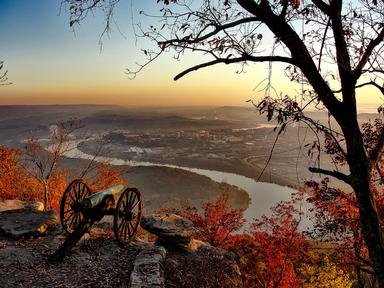Quiz Answer Key and Fun Facts
1. In April, 1861, after the firing on Fort Sumpter by rebel forces, President Lincoln issued an initial call for 70,000 volunteers. How many northerners responded?
2. The eastern Federal forces which ultimately became the Army of the Potomac were charged by the President and Congress with what primary responsibility?
3. What was the chief reason that the average Yankee private volunteered?
4. Although the Union had more troops and was ultimately better equipped, it operated under one distinct and glaring disadvantage. What was it?
5. The Yankee soldier often worried about the "cracker line." What was it?
6. If you met a Federal soldier whose uniform was trimmed in yellow and his jacket was of a short cut, to what branch of the Union army did he belong?
7. The basic fighting unit for both armies was the regiment. Raised by the individual states, the regiment normally consisted of 1,000 men and officers. Due to disease, battle and desertion that number was usually closer to 300 by the end of the first year of service. What was the largest contributing factor to this loss?
8. Poor discipline was a problem which plagued both armies, and contributed in no small way to the high mortality rate among the soldiers. What was the chief cause of this?
9. During times when there was no fighting, the armies would go into camp, sometimes for months at a time. No attention was given by the army as to how the men would entertain themselves with all that free time on their hands. The soldiers did a pretty fair job themselves, though. Reading and letter writing were popular, as was gambling, drinking, horseplay and sports such as wrestling and especially baseball. But what was probably the most popular past time?
10. Before a battle, many soldiers could be seen writing on a slip of paper and pinning it to their jackets. What was he doing?
Source: Author
Pick61
This quiz was reviewed by FunTrivia editor
bloomsby before going online.
Any errors found in FunTrivia content are routinely corrected through our feedback system.

